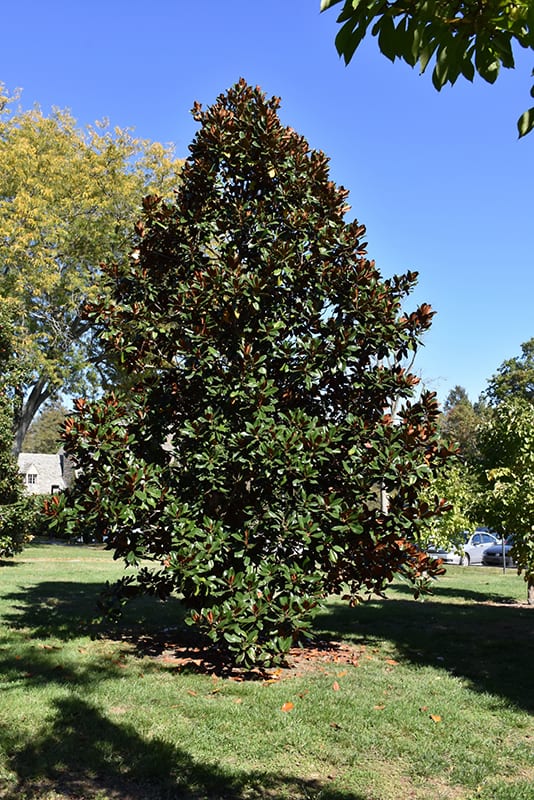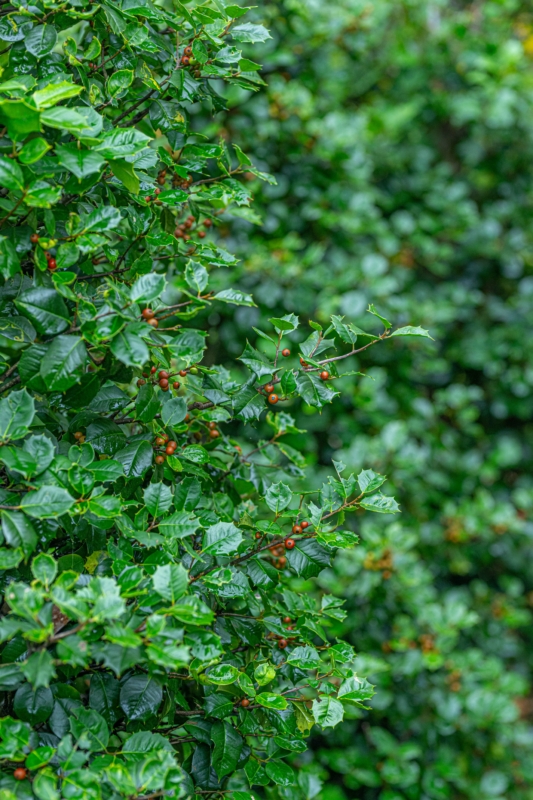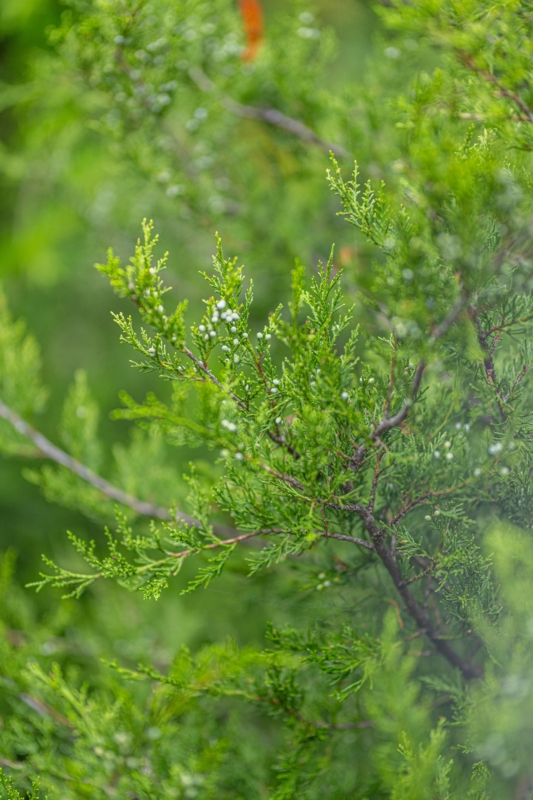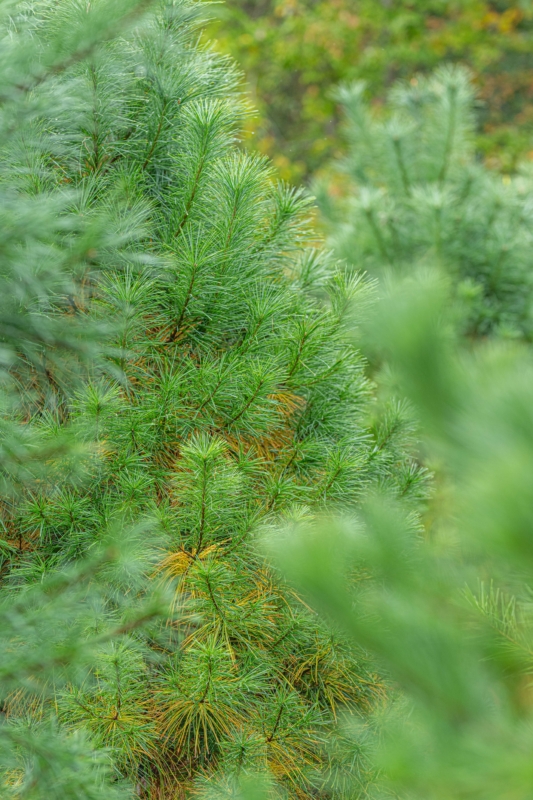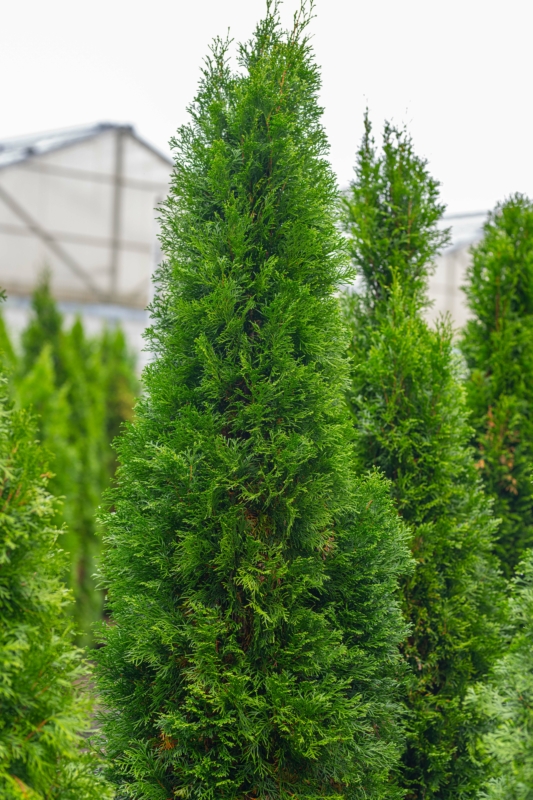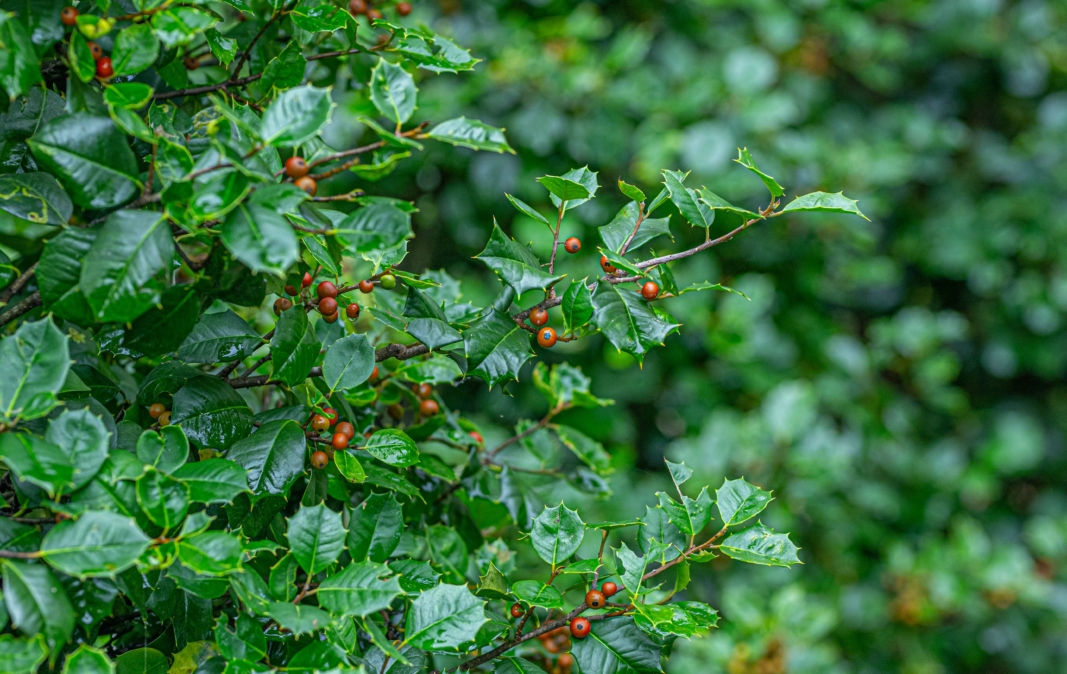 Photo by Bryn Wallace
Photo by Bryn WallaceNative Trees for Screening
If you’re looking to add privacy to an area of your yard, consider choosing an evergreen native screening plant. Trees like eastern white pine and southern magnolia grow to be very tall, while other choices like American holly and emerald green arborvitae are better for smaller lots.
When selecting plants for screening, we recommend planting a mix of different species and staggering them in diagonal formation. Planting in this manner will give the trees room to grow and also help prevent pests or deer from taking over an entire species. For example, if deer run out of other food choices and choose to eat your emerald green arborvitaes that you’ve planted with American hollies, which the deer avoid due to the leaf shape, you’ll still maintain a decent screen. Here are some of our native plant picks that are great for screening.
Southern Magnolia
Southern magnolias are large and attractive with their beautiful glossy green foliage and fragrant blooms. The variety ‘DD Blanchard’ grows to be 20’ tall with a 10’ spread and is great for larger areas. When you plant this for screening, make sure each one is placed 15’ to 20’ apart to allow room for future growth. Its shape is loosely pyramidal with cone-shaped seed heads and berries that are beloved by wildlife. Varieties of southern magnolia like ‘Teddy Bear’ and ‘Little Gem’ are dwarf and do well in smaller spaces. ‘Teddy Bear’ has a 10’ height and 5’ spread and ‘Little Gem’ has a 12’ ft height and 6’ spread. Both grow upright and oval-shaped. When using dwarf varieties for screening, plant them 5’ to 10’ apart.
American Holly
This hardy broadleaf evergreen grows to be 20’ tall with a 12’ spread and provides a great sanctuary for wildlife throughout the winter. It produces bright red fruit that are beloved by the birds and homeowners alike who enjoy clipping from the tree to use in holiday arrangements (be sure not to consume them as they are poisonous to humans). When planting American hollies for screening, place them 15’ to 20’ apart to leave room for future growth. While American hollies are beautiful, they are slow growing. So if you want immediate and dense screening, plant these with other fast growing trees, such as emerald green arborvitae.
Eastern Red Cedar
This needle-leaved evergreen tolerates poor, dry and moist soils. It is fast-growing for a small tree, becoming 15’ tall with a 6’ spread, growing on average about 1’ a year, making it a good screening plant for smaller spaces. Its cones are a bluish purple color that are delectable to wildlife. When planting multiple red cedar trees for screening purposes, place them 6’ to 12’ apart to allow room for future growth. If your space is even more limited, you can try the cultivar “Taylor” which is a columnar red cedar that grows to about 30’ tall and 3’ wide.
Eastern White Pine
Eastern white pines grow quickly, about 1’ to 3’ per year depending on the growing conditions, reaching about 25’ tall with a 15’ spread. Over the span of decades, an eastern white pine can grow to be 100’ tall with a 40’ spread. It has long, soft textured needles and its growth habit is loosely pyramidal. Eastern white pines are sensitive to wet conditions, so do not plant them in boggy soils or wet locations. In larger lots, you can group them to take up a lot of space. Space them 12’ to 20’ apart when planting for screening.
Emerald Green Arborvitae
Growing up to 15’ tall with a 4’ spread, emerald green arborvitaes are very narrow and tall. If you have a smaller lot size, these will do well as screening plants when placed 4 to 6’ apart. ‘Emerald Green’ is a compact form of American arborvitae. It is native to the mountains of Virginia and is soft textured, very reliable and low maintenance.


